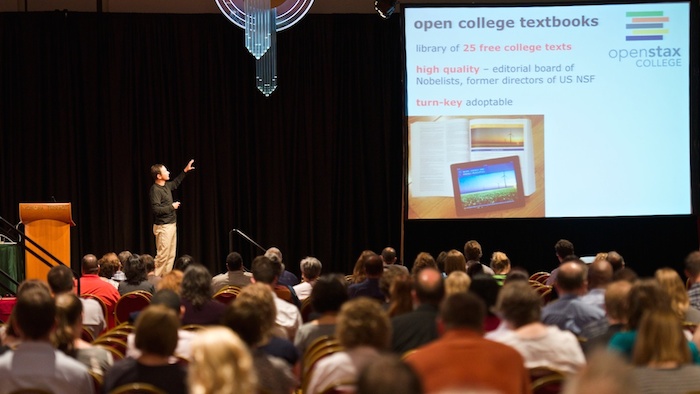Exclusive Interview With Mr. Les Howles, University of Wisconsin, Madison
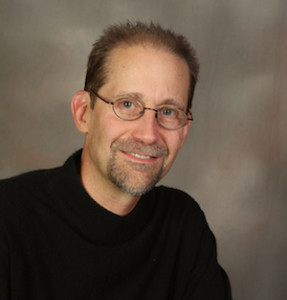
Mr. Les Howles is Director of Distance Education Professional Development at the University of Wisconsin Madison’s Division of Continuing Studies
Dr. Saba: You have a wide range of experience in educational technology, instructional design and distance education. What attracted you to this field?
Mr. Howles: My professional work over the past 25 years has focused heavily on the design of learning experiences using technology and multimedia. I have a passion for good instructional design grounded in the science of learning.
I began my career in K-12 education in the late 1970s. At that time the analog technologies used for teaching and learning were crude compared to today’s digital successors. It was awkward as a teacher using audio-visual media in the classroom, and knowledge about how to effectively design instruction with these tools was not well established. When I became exposed to the work of Marshall McLuhan I began to recognize the potential of new media technologies to extend, enhance and transform teaching and learning in radical ways. I was delighted to discover graduate programs in educational technology which included courses in instructional design, learning theories, multimedia design and production. I began to look at teaching through a new lens, approaching it like a craft where one skillfully uses tools and methods to create rich learning experiences. Following my graduate work in the mid 1980’s the “tools of the trade” were mainly video and audio tapes, slide-tape presentations, self-published text materials, and closed circuit and satellite television. Personal computers were just beginning to emerge. My earliest work in distance education began as a video producer and director. I worked in the health care profession for several years developing patient education programs and training materials for allied health professionals. After a few years in corporate training working as an instructional system designer, I eventually returned to higher education just as digital media and the Web were emerging on the educational landscape.
For my first 20 years at UW Madison I worked extensively with faculty and production teams developing online courses, software applications and interactive multimedia learning materials. During this time I became a strong advocate for evidence-based instructional design as well as more agile design methods for developing online courses and learning materials. My current position as the Director of Distance Education Professional Development builds on many of these experiences. The incredible innovation and change happening in education right now is exciting, calling forth a new pioneering spirit.
Dr. Saba: As the Director of Distance Education Professional Development (DEPD) what are your major areas of responsibility?
Mr. Howles: My two main areas of responsibility are to provide leadership for the distance education certificate courses and programs, and the Annual Distance Teaching & Learning Conference.
With regard to the certificate programs, my department offers a number of online courses and certificates for professionals interested in developing knowledge and skills in distance education and online instruction. Professionals from K-12 through higher education as well as corporate, military and non-profit organizations enroll in our courses. I work closely with our certificate program manager, Bridget Powell, who teaches courses and manages the programs including day-to-day course operations and student support. I’m also involved in the leadership and vision for the DEPD curriculum including curriculum development and the hiring of adjunct faculty and instructional technology support staff. As Director, I focus heavily on evaluation, marketing, developing partnerships and strategic planning efforts to broaden and adapt our course offerings to serve more distance education professionals. We are currently testing a number of pilot programs with various organizations to customize our courses and learning materials for integration into their own faculty and staff development programs. I’m also working with the DEPD instructional staff in the design of several new courses we’re looking forward to launching later this year.
The second part of my job is to provide leadership and vision for the Annual Conference on Distance Teaching & Learning 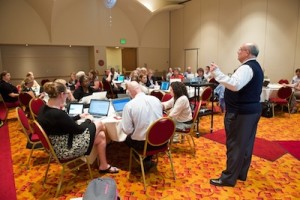 held every summer in Madison. As Director, I work closely with Kimary Peterson, our DEPD staff member who has managed the conference for 15 years. Kimary and I collaborate wth the conference planning committee and other advisors–many of whom are national leaders in distance education. The committee recommends conference speakers, informs us of industry trends and serves as a sounding boardfor new conference ideas. We spend considerable time thoughtfully designing the conference program, selecting and working with major speakers, reviewing proposals and making final decisions related to marketing, budget and program content. Conference planning happens all year. In this position, it’s important to consistently monitor trends, and build strategic relationships with publishers, sponsors and potential presenters. It is my great pleasure to work with and collaborate with such an excellent group of talented people. I truly enjoy the challenge of overseeing the creation of professional development experiences that can change the trajectory of people’s careers.
held every summer in Madison. As Director, I work closely with Kimary Peterson, our DEPD staff member who has managed the conference for 15 years. Kimary and I collaborate wth the conference planning committee and other advisors–many of whom are national leaders in distance education. The committee recommends conference speakers, informs us of industry trends and serves as a sounding boardfor new conference ideas. We spend considerable time thoughtfully designing the conference program, selecting and working with major speakers, reviewing proposals and making final decisions related to marketing, budget and program content. Conference planning happens all year. In this position, it’s important to consistently monitor trends, and build strategic relationships with publishers, sponsors and potential presenters. It is my great pleasure to work with and collaborate with such an excellent group of talented people. I truly enjoy the challenge of overseeing the creation of professional development experiences that can change the trajectory of people’s careers.
Dr. Saba: This year the annual conference on distance teaching and learning is celebrating its 30th anniversary. How has the conference evolved in recent years?
Mr. Howles: The conference began back in the mid 1980’s through the efforts of several legendary leaders in the distance education field. Since then the conference has established itself as a reputable, premiere event for distance learning professionals internationally.
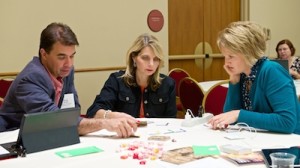 Although I’ve attended the conference regularly since 1995 and served on several conference committees, this is my first year in the driver’s seat as conference director. From my perspective, the conference has seen some considerable changes over the last decade. It has adapted to new trends, technologies and other changes in the field. Evolving terminology is a good example. Despite the “distance education” label, terms such as eLearning, online learning, flipped and blended learning have been easily assimilated into the conference program.
Although I’ve attended the conference regularly since 1995 and served on several conference committees, this is my first year in the driver’s seat as conference director. From my perspective, the conference has seen some considerable changes over the last decade. It has adapted to new trends, technologies and other changes in the field. Evolving terminology is a good example. Despite the “distance education” label, terms such as eLearning, online learning, flipped and blended learning have been easily assimilated into the conference program.
We’ve also adapted to changes in attendee preferences. We’ve seen an increased desire for more dialogue and participation. We seem to be adding more participatory elements to the conference program every year such as discussion groups, communities of practice forums and networking opportunities.
Changing the conference location in 2002 to the Monona Terrace in downtown Madison has had a positive impact on the overall quality of the conference experience. This location better supports spontaneous informal encounters where attendees and main presenters can easily connect. The location also affords participants with more opportunities to network at local restaurants and to enjoy the amenities of downtown Madison as well as the university campus.
Another trend we’ve addressed is to offer more compressed learning events. Many attendees want quicker sessions involving smaller chunk learning. In response to this we’ve added more speed sessions with shorter time slots and narrow slices of content.
The conference has always been practitioner-focused emphasizing practical application tied to research in the field. Achieving just the right balance between practice and research has always been our goal. More recently we have seen an increased interest in instructional design, so our program has included more practitioner-focused sessions related to this aspect of distance education.
Several years ago we added a virtual conference option which seems to work best for potential attendees from organizations with limited budgets who cannot travel. However, we don’t intend to expand this offering in the near future. Our primary focus going forward will be to provide increased value for individuals participating in the face-to-face conference experience.
The conference will continue to evolve and adapt to the needs of our participants. I believe we are at a critical phase, especially in higher education, as new innovations and rapid change disrupt old paradigms and structures. As we move forward, the conference will embrace and reflect these changes.
Dr. Saba: What is your vision for the future of the conference? How do you think it will evolve and grow from this point on?
Mr. Howles: Right now things are changing so rapidly that in our conference planning we need to be far ahead just to stay current. Ray Schroeder, one of our keynote speakers this year has worked in the field of distance and online education for over 30 years. He mentioned to me that that the amount of change in the last three years has far exceeded what he has seen during the last three decades. This accelerated change is of concern to me. I suspect this trend will continue and not slow down or reach a point of equilibrium. If anything it will increase and be very disruptive. Our conference needs to continuously reflect this changing state of affairs in education and provide a value-added service to our attendees. Therefore, the conference will need to change in terms of both its structural framework as well as its program content.
Beginning this year the conference will take on a new energy and dynamic. There will be more variety and a somewhat faster pace for the plenary sessions. There will also be opportunities for in-depth involvement. On the programmatic side we have made a special effort to include an abundance of expert presenters who are seeded throughout the conference program at all times. In addition to featuring two or three keynoters, we will also host several recognized experts covering a variety of current topics. In the past, I suspect that some of the more experienced practitioners may have been drawn to the conference because of a keynote speaker and may not have found the remainder of the conference advanced enough for their professional development. The conference going forward will better address the needs of both novice and seasoned practitioners.
We’re also raising the bar on quality. We had a large number of info and discussion session proposals submitted this year. One thing we did and will continue to do is to accept proposals that incorporate some form of evaluation. For example, if someone proposes to present on a new teaching tool or method they tried out, there needs to be an evaluation component. In order for our profession to grow we need to be more evidence-based in our decision-making regarding the use of new technologies and methods of instruction. This is one reason why we have presenters like Michael Quinn Patton coming to this year’s conference. He will address evaluation in a very practical way. We’ll also being “walking the talk” by collecting more evaluative data and feedback (non-intrusively) throughout the entire conference event.
Moving forward, the conferences will also be more dialogic and participatory. This will afford more opportunities for personalized in-depth learning. People want more participation, interaction and less formality. This conference and those that follow will be designed primarily around creating a participant experience. This is somewhat akin to what we’re doing now with new learning designs involving personalization, interactivity, engagement, and a focus on the development of competencies.
There are many more conferences to choose from today. Conferences such as ours need not try to be everything to  everybody. However, in terms of differentiation, our conference will continue to be highly practitioner focused. We want people to walk away being able to take action, chart a new course, solve real-world problems and expand their professional networks by becoming part of a thriving community of practice.
everybody. However, in terms of differentiation, our conference will continue to be highly practitioner focused. We want people to walk away being able to take action, chart a new course, solve real-world problems and expand their professional networks by becoming part of a thriving community of practice.
Dr. Saba: What are some of the highlights of the conference this year?
Mr. Howles: One of the biggest highlight of this year’s conference is the number and quality of featured speakers. For starters, Elliott Masie, a world recognized thought leader in technology and learning, will help kick-off the conference. He’ll be appearing live via video from the Masie Center in Saratoga Springs, New York. Elliott is credited for coining the term “eLearning.” He is on the cutting edge yet very practitioner focused. He’ll share with us some new directions and trends impacting how we think about and design online learning programs.
The conference will also feature three outstanding keynote speakers, one of whom is Michael Quinn Patton, a world-renown evaluation guru. Michael will be giving a pre-conference workshop, a keynote talk and a spotlight interview. He’ll be talking about a new approach called “developmental evaluation” which is especially relevant during times of rapid change, high innovation and complexity.
Ray Schroeder, a 30 year seasoned leader in distance education, has miraculously kept pace over the years with the rapidly changing landscape of technology and learning. He’ll share with us practical tips and strategies for keeping ahead of the wave of educational innovations and how to navigate the path ahead.
Jane Bozarth is a return keynote speaker and a world recognized expert on using social media for learning. We’ve brought Jane back to teach us how to effectively use social media tools in blended and distance education courses.
We have also invited about a dozen thought leaders and experts for “Spotlight Sessions.” Many of these spotlight presenters could be considered keynote speakers in their own right. Visit our conference website’s Featured Speakers’ section for descriptions of these sessions.
This year we’ve added a new twist to the communities of practice forums from previous conferences. It’s called the “Community of Practice Café.” The CoP Café will be open during the entire conference for individuals or groups to gather spontaneously around emergent topics of their own choice. Any conference participant may freely initiate a “community of practice” discussion.
Since this is the conference’s 30th anniversary we will also be holding several special events. One of these will be an evening rooftop celebration on the Monona Terrace, designed by architect Frank Lloyd Wright. At the conclusion of the conference on Thursday afternoon, there will be a celebration forum and dessert reception. This highly interactive, fun and informative forum will feature several distinguished distance education notables including Curt Bonk, Rich Schearer, Darcy Hardy, Rena Palloff and many others.
Overall, this year’s Distance Teaching & Learning Conference will be one conference you won’t want to miss! With over 140 sessions and a host of outstanding presenters and thought leaders, there will surely be something for everyone. Visit the conference website and register for this professional development opportunity that promises to educate, engage and yes, definitely inspire you!
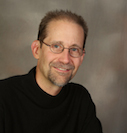 Les Howles is a leader in distance and online education and interactive multimedia design. He is currently the Director of Distance Education Professional Development at the University of Wisconsin Madison’s Division of Continuing Studies. He has more than 25 years of experience as an instructor, designer and technology consultant in corporate, government, medical and academic settings. In addition to teaching blended and online courses, he leads project teams in the development of online instructional programs, multimedia applications and other professional development experiences. Les has a graduate degree in educational technology from the University of Oregon and undergraduate degrees in education and educational psychology. He has been a frequent presenter at national, local and regional conferences, as well as a guest speaker at various universities.
Les Howles is a leader in distance and online education and interactive multimedia design. He is currently the Director of Distance Education Professional Development at the University of Wisconsin Madison’s Division of Continuing Studies. He has more than 25 years of experience as an instructor, designer and technology consultant in corporate, government, medical and academic settings. In addition to teaching blended and online courses, he leads project teams in the development of online instructional programs, multimedia applications and other professional development experiences. Les has a graduate degree in educational technology from the University of Oregon and undergraduate degrees in education and educational psychology. He has been a frequent presenter at national, local and regional conferences, as well as a guest speaker at various universities.

